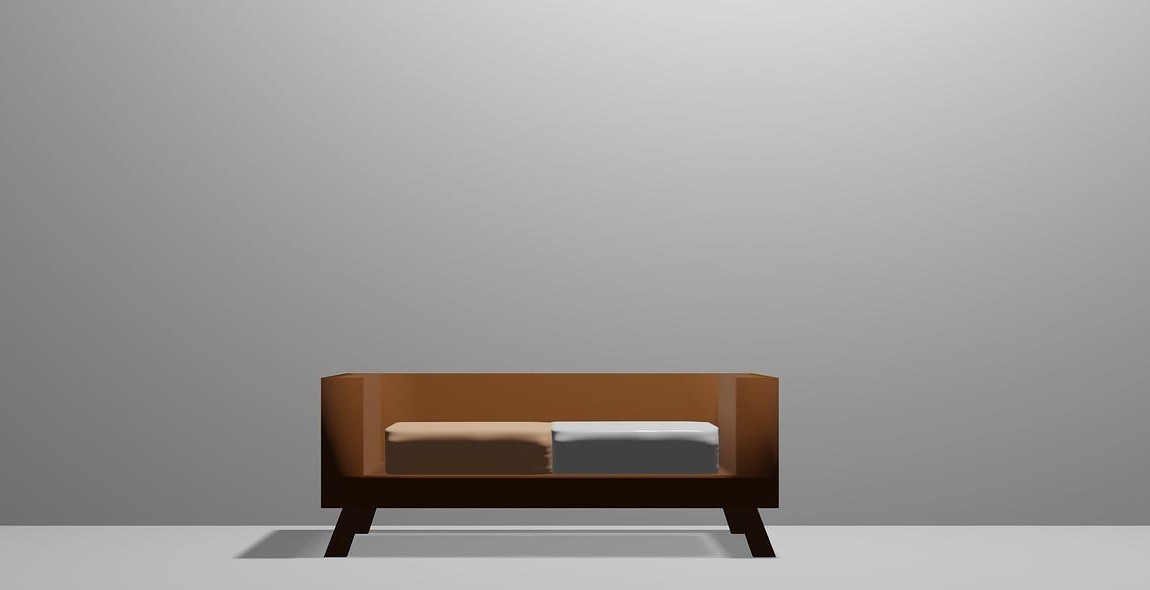Introduction: How to Design a Modern Living Room with Minimalist Elements
A modern living room is the heart of any home, where family and friends gather to relax, entertain, and enjoy each other’s company. In recent years, the minimalist design trend has taken the interior design world by storm, and for good reason. Minimalism is not only visually appealing, but it also promotes a clutter-free and stress-free environment.
Why Minimalism is Important in Modern Living Room Design
Minimalism is all about simplicity, functionality, and clean lines. In a modern living room, minimalism can create a sense of spaciousness, allowing the room to feel open and airy. By using a minimalist approach, you can also highlight the key elements of the room, such as a beautiful piece of artwork or a unique piece of furniture.
Another benefit of incorporating minimalist elements in your modern living room design is that it can make the space feel more relaxing and calming. A clutter-free environment can help reduce stress levels and promote a sense of tranquility.
Whether you’re starting from scratch or looking to update your current living room, incorporating minimalist elements can transform your space into a modern oasis. In this article, we’ll explore how to design a modern living room with minimalist elements, from choosing the right color palette to selecting the perfect furniture pieces.

Step 1: Choose a Neutral Color Palette
When it comes to designing a modern living room with minimalist elements, choosing a neutral color palette is the first step. Neutral colors are timeless, sophisticated, and calming, making them the perfect choice for a minimalist living room design.
Why Choose a Neutral Color Palette?
Neutral colors like white, beige, gray, and black can create a calming and relaxing atmosphere in your living room. They also provide a blank canvas for you to add pops of color and texture with furniture, decor, and artwork.
Neutral colors are versatile, which means they can work well with any style of decor. Whether you prefer a modern, traditional, or eclectic living room design, a neutral color palette can complement your style and tie everything together.
How to Choose the Right Neutral Color Scheme for Your Living Room
When choosing a neutral color scheme for your living room, consider the following:
- Tone: Choose a warm or cool tone for your neutral colors based on the style and mood you want to create. Warm tones like beige, cream, and taupe can create a cozy and inviting atmosphere, while cool tones like gray, blue, and green can create a calming and refreshing environment.
- Contrast: Use contrast to add depth and interest to your neutral color palette. For example, pair light and dark shades of the same color or mix and match different neutral colors to create a dynamic and layered look.
- Texture: Add texture to your neutral color scheme with different materials like wood, metal, and fabric. This will create visual interest and prevent your living room from looking flat or boring.
By choosing the right neutral color palette for your living room, you can create a modern and minimalist space that is both stylish and functional.
Step 2: Focus on Functionality
While a modern living room should have a minimalist feel, it still needs to be functional. Here are some tips on how to incorporate functionality into your living room design:
1. Choose comfortable and durable furniture
When selecting furniture for your living room, choose pieces that are both comfortable and durable. Look for sofas and chairs with sturdy frames and high-quality upholstery. If you have children or pets, consider materials that are easy to clean and maintain.
2. Create designated areas
Designate specific areas in your living room for different activities. For example, create a reading nook with a comfortable chair and a side table for books and a lamp. If you like to watch TV, create a seating area focused around the television.
3. Maximize storage
Storage is essential in any living room to keep clutter at bay. Consider built-in shelving or cabinets to store books, games, and other items. Choose furniture pieces with built-in storage, such as a coffee table with drawers or a storage ottoman.
4. Add lighting
Lighting is crucial in a modern living room to create a comfortable and inviting atmosphere. Use a combination of overhead lighting, table lamps, and floor lamps to create a layered lighting scheme. Consider adding dimmer switches to control the level of light in the room.
5. Incorporate technology
Incorporating technology into your living room design can enhance its functionality. Consider installing a sound system or a smart TV. Choose furniture pieces with built-in charging ports or add a charging station to keep your devices organized.
| Tip | Example |
|---|---|
| Choose comfortable and durable furniture | Look for sofas and chairs with sturdy frames and high-quality upholstery |
| Create designated areas | Create a reading nook with a comfortable chair and a side table for books and a lamp |
| Maximize storage | Consider built-in shelving or cabinets to store books, games, and other items |
| Add lighting | Use a combination of overhead lighting, table lamps, and floor lamps to create a layered lighting scheme |
| Incorporate technology | Consider installing a sound system or a smart TV |
Step 3: Declutter Your Living Room
One of the key elements of a modern living room is minimalism. This means that your living room should be clutter-free and streamlined. Here are some tips for decluttering your living room:
1. Start with a plan
Before you start decluttering, it’s important to have a plan. Decide what you want to keep and what you want to get rid of. Make a list of the items you want to keep and organize them in a way that makes sense to you. This will help you stay focused and avoid getting overwhelmed.
2. Get rid of anything you don’t need or use
Take a good look at your living room and identify any items that you don’t need or use. This could be anything from old magazines to unused furniture. Once you’ve identified these items, get rid of them. You can donate them to charity, sell them, or throw them away.
3. Create storage solutions
If you have a lot of items that you want to keep, it’s important to create storage solutions. This could be anything from shelves to storage ottomans. Make sure that your storage solutions are functional and fit in with your overall design aesthetic.
4. Keep surfaces clear
One of the easiest ways to declutter your living room is to keep surfaces clear. This means getting rid of any unnecessary items on your coffee table, end tables, and bookshelves. Only keep items that are functional or add to the overall design of your living room.
5. Regularly review and purge
Finally, it’s important to regularly review and purge your living room. This means going through your items every few months and getting rid of anything that you no longer need or use. This will help you maintain a clutter-free and streamlined living room.
By following these tips, you can declutter your living room and create a modern, minimalist space that is both functional and stylish.

Step 4: Select Simple and Streamlined Furniture
One of the key elements of a modern living room is the furniture. When choosing furniture for your modern living room, it is important to keep in mind the principles of minimalism. This means selecting pieces that are simple and streamlined, with clean lines and a focus on functionality.
Consider the Size of Your Living Room
Before selecting furniture for your modern living room, it is important to consider the size of the space. Large, bulky furniture can overwhelm a small living room, while small furniture can get lost in a large space. Measure your living room and choose furniture that is appropriately sized for the space.
Choose Neutral Colors
Another important consideration when selecting furniture for a modern living room is color. Neutral colors such as white, gray, and beige work well in a modern living room, as they create a clean and uncluttered look. If you want to add a pop of color, consider adding a brightly colored accent piece, such as a throw pillow or rug.
Focus on Functionality
When selecting furniture for a modern living room, it is important to focus on functionality. Choose pieces that serve a purpose, such as a coffee table with built-in storage or a sofa bed for overnight guests. Avoid furniture that is purely decorative, as this can clutter up the space and detract from the overall look and feel of the room.
Invest in Quality Pieces
Finally, when selecting furniture for your modern living room, it is important to invest in quality pieces. While it may be tempting to go for cheaper options, investing in high-quality furniture will pay off in the long run. Not only will it last longer, but it will also look better and be more comfortable to use.
| Do | Don’t |
|---|---|
|
|

Step 5: Add Texture and Depth
Minimalism doesn’t have to mean a lack of texture or depth in your living room design. In fact, incorporating texture and depth can add visual interest and a cozy feeling to a minimalist space. Here are some tips for adding texture and depth to your living room:
1. Use Natural Materials
Natural materials like wood, stone, and leather can add texture and depth to a minimalist living room. Consider adding a wooden coffee table, a stone accent wall, or a leather armchair to your space.
2. Layer Your Textiles
Layering textiles like rugs, throw pillows, and blankets can add both texture and depth to a living room. Choose fabrics with different textures and patterns to create visual interest.
3. Incorporate Artwork
Adding artwork to your living room can create visual interest and depth. Consider hanging a large piece of artwork on a blank wall or displaying a collection of small pieces on a shelf.
4. Mix Modern and Vintage Elements
Combining modern and vintage elements in your living room can add depth and texture to your space. Consider pairing a sleek modern sofa with a vintage rug or adding a mid-century modern armchair to a minimalist space.
5. Add Plants
Adding plants to your living room can bring texture and depth to your space while also improving air quality. Choose plants with interesting textures and shapes to add visual interest to your minimalist design.
By incorporating these tips, you can add texture and depth to your minimalist living room design.
Conclusion
Designing a modern living room with minimalist elements can be a challenging task, but the end result is worth it. By following the tips mentioned in this article, you can create a space that is both functional and aesthetically pleasing.
Keep it Simple
Minimalism is all about simplicity and functionality. Therefore, when designing your modern living room, it is important to keep things simple. Avoid clutter and unnecessary decorations. Instead, focus on creating a space that is clean, open, and inviting.
Choose the Right Colors
When it comes to minimalist design, color plays a crucial role. Choose a neutral color palette that includes shades of white, black, gray, and beige. These colors will help create a calming and relaxing atmosphere in your living room.
Incorporate Natural Elements
Natural elements like wood, stone, and plants can add warmth and texture to your modern living room. These elements also help create a connection between the indoors and outdoors, making your living room feel like a natural extension of your surroundings.
Invest in Quality Furniture
When it comes to minimalist design, quality is more important than quantity. Invest in high-quality furniture pieces that are both functional and stylish. These pieces will last for years and will help create a timeless and sophisticated look in your living room.
Final Thoughts
Designing a modern living room with minimalist elements requires careful planning and attention to detail. By following the tips mentioned in this article, you can create a space that is both functional and beautiful. Remember to keep things simple, choose the right colors, incorporate natural elements, and invest in quality furniture. With these elements in place, your modern living room will be a space that you and your family will love for years to come.
